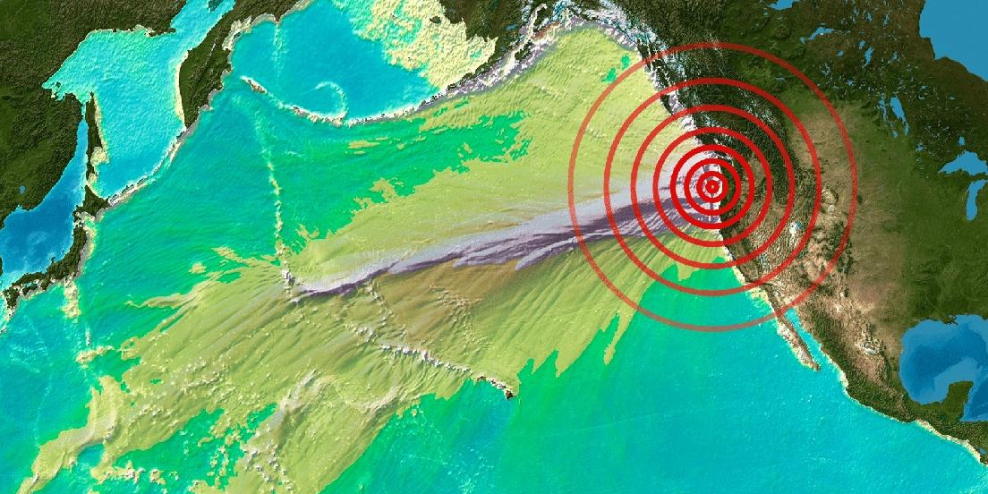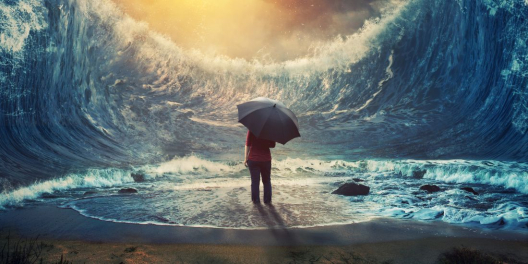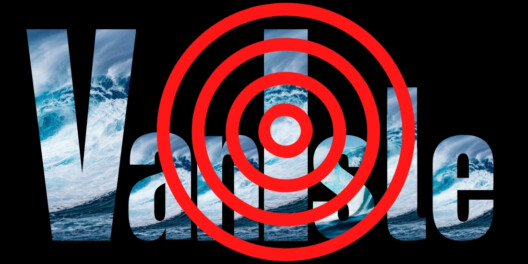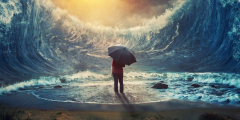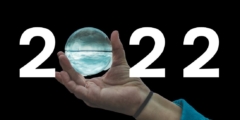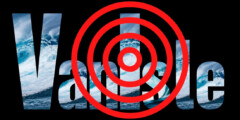On Apr. 14th, a magnitude 6.0 earthquake rattled dishes from Port Hardy to Kitimat. The quake was centred along the Juan de Fuca plate about 200 km off Vancouver Island.
According to the USUSlogical Survey (USGS), it was felt as far south as Corona, Calif., almost 2,000 kilometres from the quake’s epicentre.
On average, BC experiences 3,000 earthquakes annually, more than eight every day. But most of them aren’t as big as the one last week. In fact, the majority of them are so small that they happen without us knowing it.
But big ones have happened in the past, and experts believe we’re due for another one.
In 1946 the Comox Valley was hit hard by a magnitude 7.3 earthquake, the 7th largest ever recorded in Canada. We live in what earth scientists call the Cascadia subduction zone, and it stretches for 1,000 km from the north end of our island to Cape Mendocino in California.
It’s where the Juan de Fuca plate inches eastward and gets shoved beneath the North American plate, which is slowly crumbling under this enormous pressure. Most of the time, the plates are locked tight by friction. Tension builds up as the subduction process continues.
But when this tension exceeds the friction, the plates can suddenly slip past each other releasing hundreds of years of pent-up energy.
They call them mega-thrust earthquakes, and they can be violent. The last time one of these giant earthquakes rocked our part of the world was more than 300 years ago when a magnitude nine quake struck on Jan. 26, 1700, at about 9 pm.
“There would have been widespread landslides, tsunamis, slumping and damage to buildings. We know that the tsunamis wiped out the winter village of the Pacheena Bay people,” says Alison Bird, an earthquake seismologist with Natural Resources Canada.
Do some quick math, and the result is unsettling.
Over the past 3,500 years, there have been an estimated seven mega-thrust quakes in Cascadia. That’s one every 500 years on average. So, it’s safe to say that in geological time we’re on the cusp of another big one.
The question is, how prepared is Vancouver Island?
Since the last mega-thrust in 1700, cities and communities have sprouted up, containing countless buildings not built to modern seismic standards.
Experts predict that we could experience widespread infrastructure damage and power loss. A powerful earthquake could trigger tsunamis that would threaten many coastal communities.
Households should have an emergency kit, including enough food, water, medications, and other consumables for up to 10 days. Do you?
BC is divided into five tsunami notification zones covering most of Vancouver Island and the mainland coast of BC. Northern, western, central, and southern VanIsle are in notification zones.
If you live in a tsunami notification zone, warnings will be broadcast across television, radio and compatible mobile through BC’s emergency alert system.
For more information on BC’s earthquake preparedness, go to Shake Out BC.

